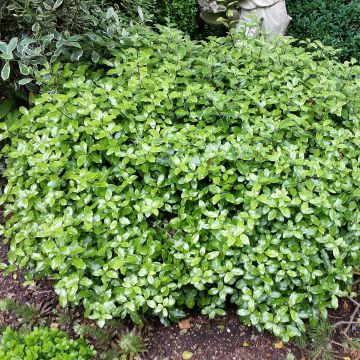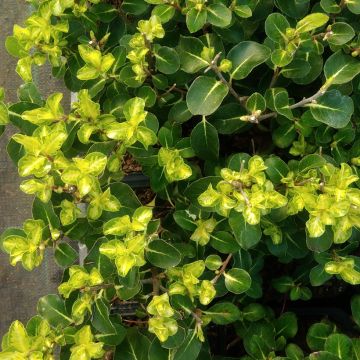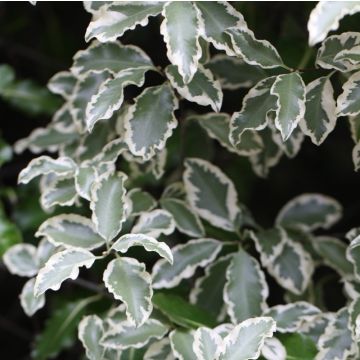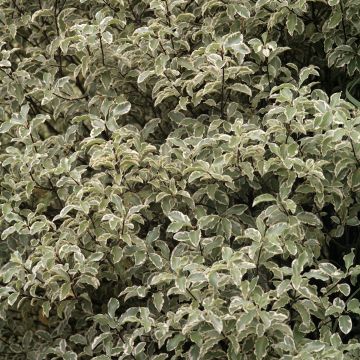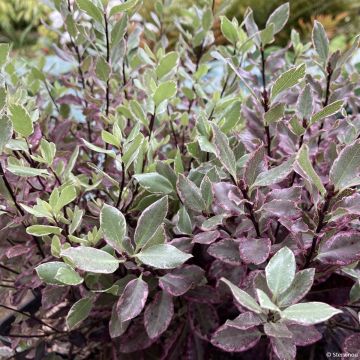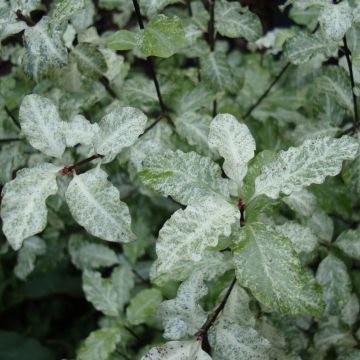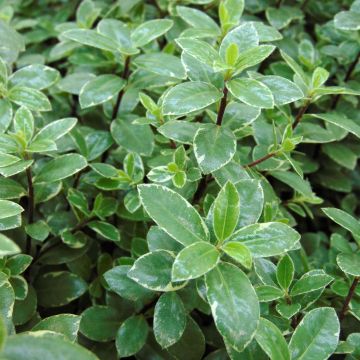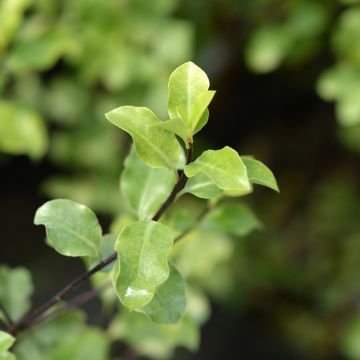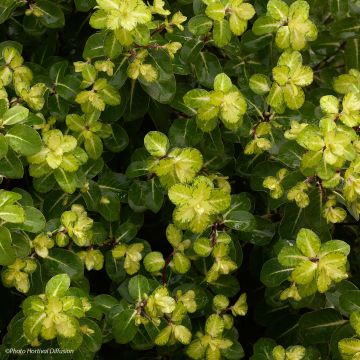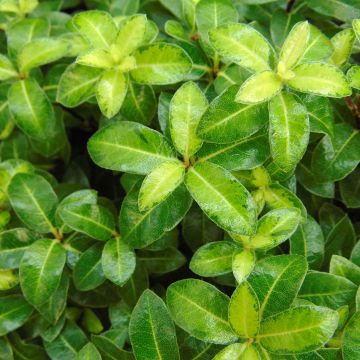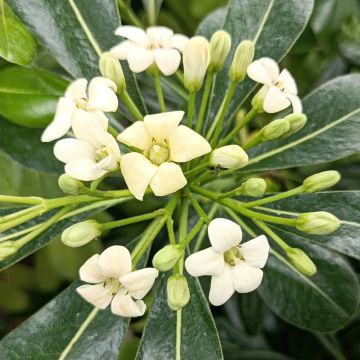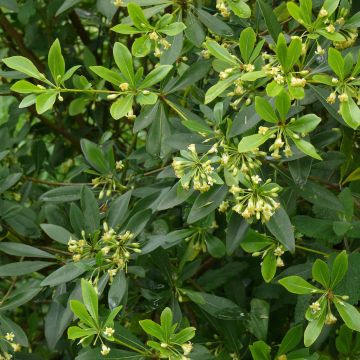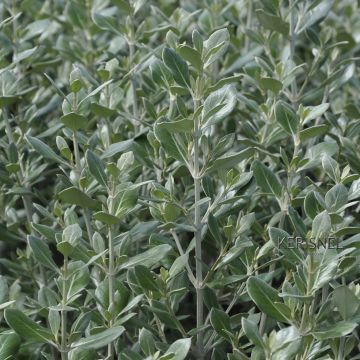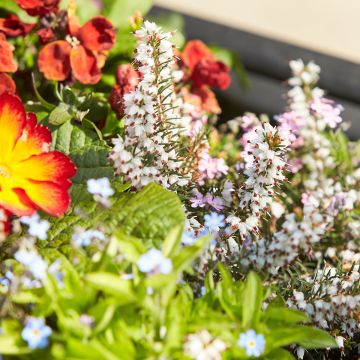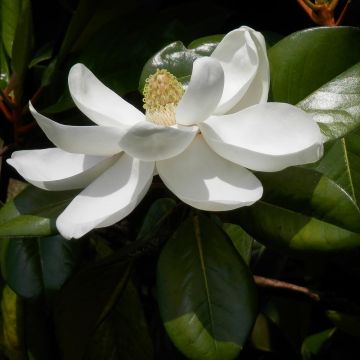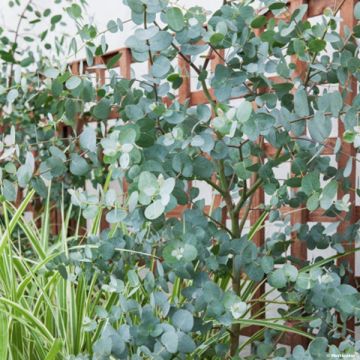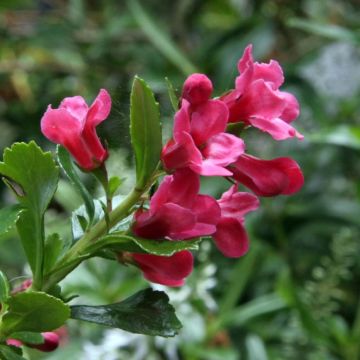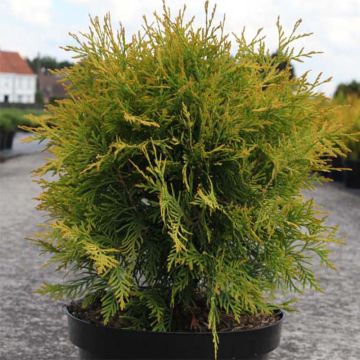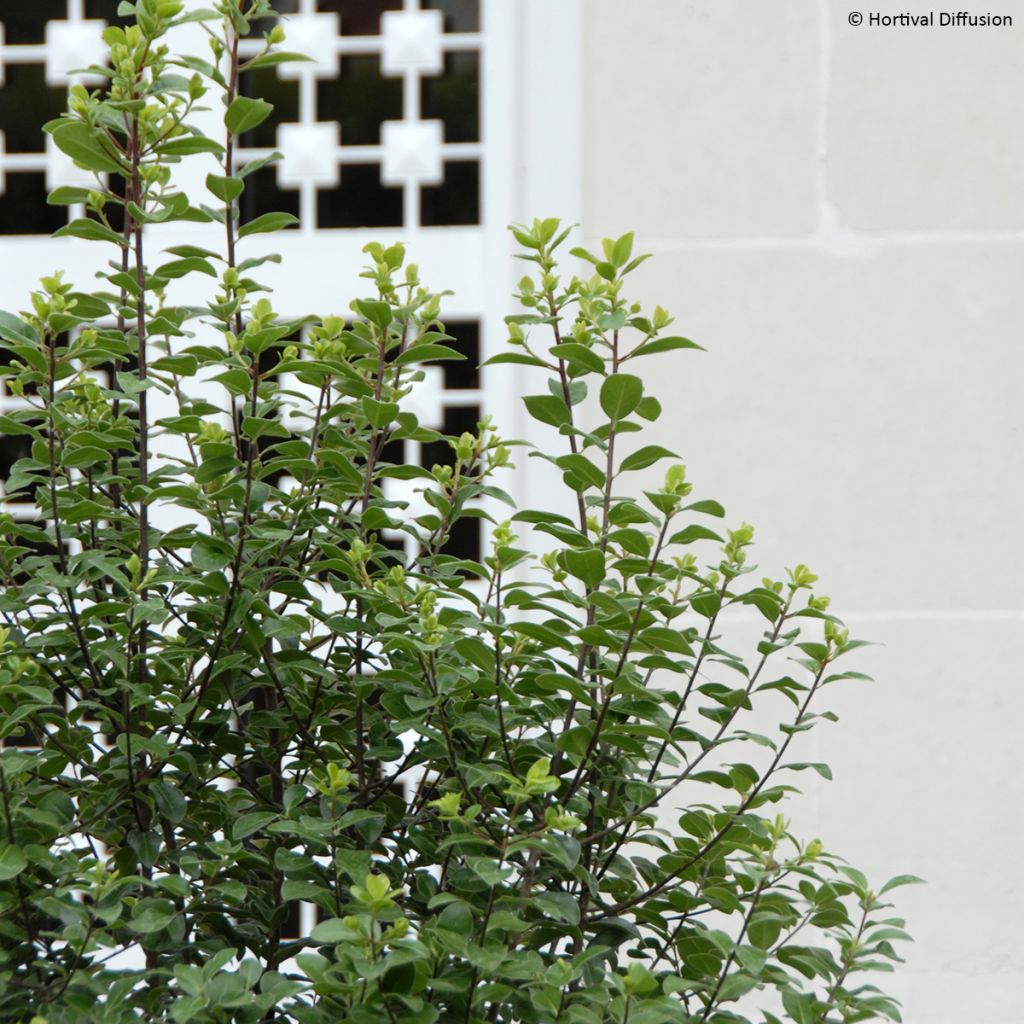

Pittosporum tenuifolium Irish Luck - Kohuhu
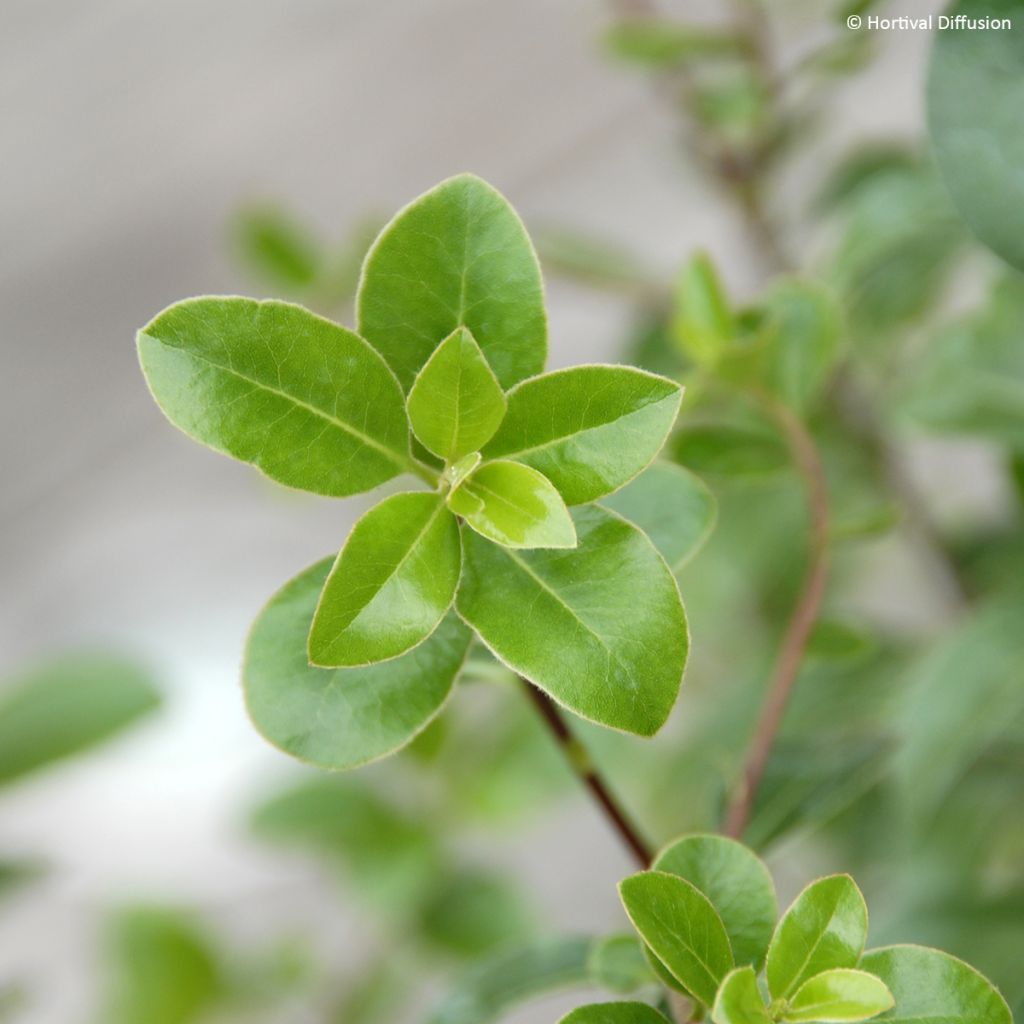

Pittosporum tenuifolium Irish Luck - Kohuhu
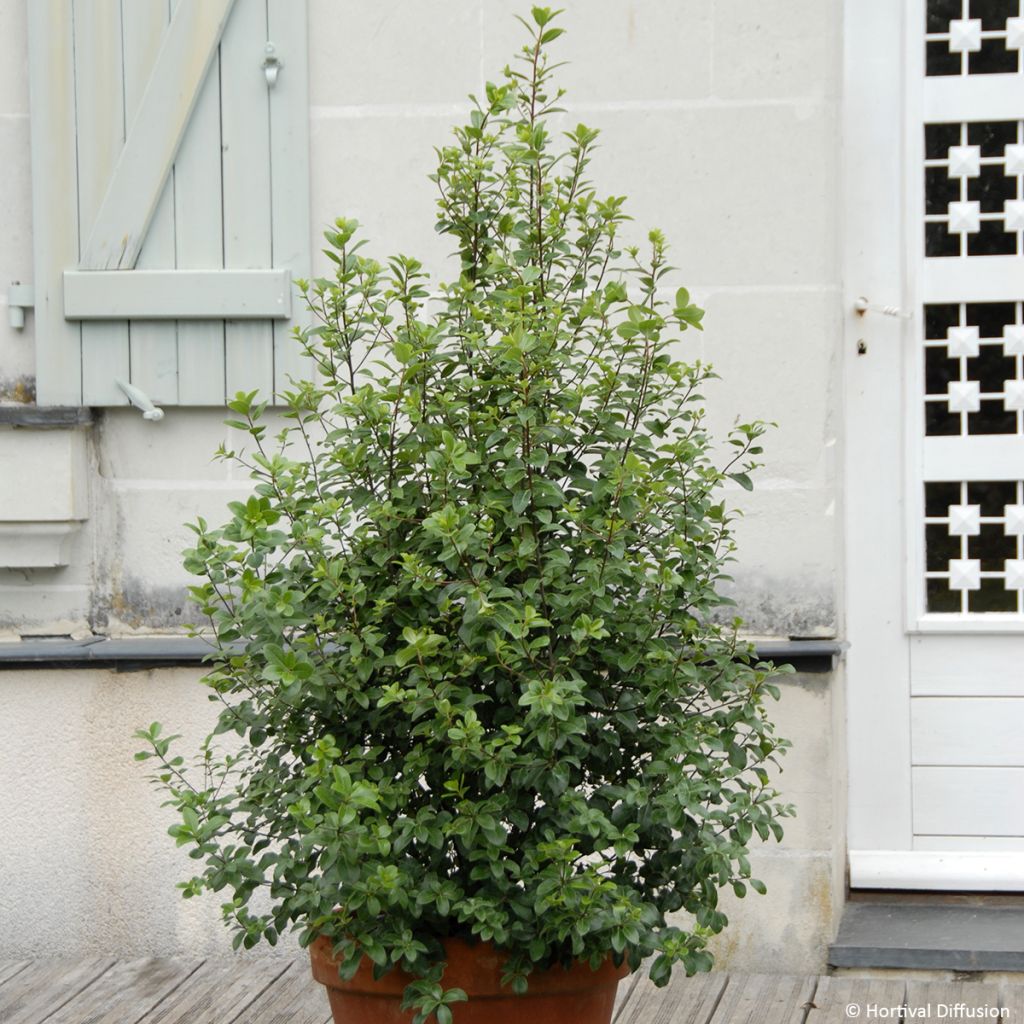

Pittosporum tenuifolium Irish Luck - Kohuhu
Pittosporum tenuifolium Irish Luck - Kohuhu
Pittosporum tenuifolium 'PTG18' IRISH LUCK
Kohuhu, Tawhiwhi, Black Matipo
Why not try an alternative variety in stock?
View all →This plant carries a 24 months recovery warranty
More information
We guarantee the quality of our plants for a full growing cycle, and will replace at our expense any plant that fails to recover under normal climatic and planting conditions.
From €5.90 for pickup delivery and €6.90 for home delivery
Express home delivery from €8.90.
Does this plant fit my garden?
Set up your Plantfit profile →
Description
Pittosporum tenuifolium Irish Luck is a medium to large variety of Pittosporum with small leaves. This fast-growing bush features ornamental shiny green foliage and very dense vegetation. It is tolerant of pruning making it the ideal plant for hedges or topiaries to effectively replace box. It is resistant to pests and in late spring, it offers a discreet flowering that releases a honey scent in the evening. Thriving in full sun, or possibly in partial shade in the south, it tolerates summer drought and limestone soils well. More hardy than variegated varieties, it withstands cold temperatures down to approximately -12°C once well established.
Pittosporum is practically the only genus known in our regions of the Pittosporaceae family, and the richest in species, approximately 150, mainly shrubs and trees, with a good number originating from New Caledonia and New Zealand. Alongside its cousin, Pittosporum tobira, P. tenuifolium is certainly the most common in our gardens in mild climates. It is native to New Zealand, where it is common in coastal and mountain forests up to 900 m, flowering in October-November. In its native country, it forms a highly branched shrub 3 to 6 m tall, or a small evergreen tree with a slender trunk 9 to 10 m tall, resistant to frost down to -10°C but vulnerable to icy winds. Its common name locally is Kōhūhū, or Black Matipo.
The species has given rise to several horticultural varieties with highly decorative foliage, often variegated or purple. Irish Luck 'PTG18' is a cultivar selected by New Zealand breeders John and Kathleen Richie in Ōtāne, a locality on the east coast of the North Island (250 km north of the capital, Wellington). This variety is distinguished by an upright habit with rapid growth and reaches a height of 3 m with a spread of 2 m ten years after planting. Hardier than variegated or colourful varieties, it withstands temperatures down to -10/-12°C once well rooted in the soil. It has dense, bushy vegetation with very branched dark twigs. These bear alternate, ovate leaves on short petioles. Shiny mid-green with small hairs on their edges, they measure 4 to 4.5 cm long by 2.5 cm wide. Their colour provides a nice contrast against the dark purple tips of the twigs. Flowering occurs in late spring or early summer. Small dark purple flowers appear in the leaf axils and release a pleasant scent in the evening. They then develop into round fruits, initially green and almost black when ripe.
Highly tolerant of pruning, this Pittosporum is perfect for hedges or topiaries. Thriving in full sun and tolerating partial shade, especially in southern areas, it requires well-drained soil, a warm location, and protection from prevailing winds. Used in hedges, it will enhance the plants at its feet. Pair it with the compact Physocarpus opulifolius Magic Ball, whose foliage changes from spring orange to golden yellow, before igniting in red in autumn, for a stunning scene throughout the growing season. Somewhat taller but tolerating severe pruning, Cotinus coggygria Old Fashioned will create the same botanical magic with its oval leaves emerging in orange-purple, then turning blue-green before ending in a burst of warm colours, blending bright pink, red, and orange. Equally cold-resistant, if not more so, Grevillea junipera with dark green needle-like foliage will delight you with its striking and long-lasting bright red flowering, particularly aesthetic.
Pittosporum tenuifolium Irish Luck - Kohuhu in pictures


Plant habit
Flowering
Foliage
Botanical data
Pittosporum
tenuifolium
'PTG18' IRISH LUCK
Pittosporaceae
Kohuhu, Tawhiwhi, Black Matipo
Cultivar or hybrid
Other Pittosporum
Planting and care
Pittosporum Irish Luck is best planted in spring in fertile, loamy, well-drained soil. It tolerates limestone but particularly appreciates soils rich in silt. At planting, mix leaf compost and coarse sand with your garden soil at a ratio of 50%. Water your subject generously once or twice a week to promote establishment. Once established (after 2 or 3 years), this bush can do without watering in summer, though in very dry regions, occasional watering in summer will be welcome. Mulch the base immediately after planting. Moderately hardy (-10/-12°C), choose a warm location, in full sun and sheltered from prevailing winds in cool areas. A south-facing wall will be a good location in regions with harsh winters. Under a cooler climate, cover it with a thick winter fleece to protect it in winter. To help it branch out during the first years of planting, you can pinch the young shoots. For mature subjects, trim back any branches that appear untidy at the end of the season. It is possible to shape it into a ball or hedge. In case of a somewhat harsh winter (prolonged cold, snow), prune severely, the plant will regrow and the 'ball' will reform. In the most severe cases, prune to ground level, it may regrow from the stump, quite late in spring.
Pittosporum tenuifolium may be subject to Phytophthora, a fungus that attacks the collar and roots in soils that are both constantly warm and humid. However, this Irish Luck variety shows good resistance to parasites, as well as to salt in coastal areas.
Planting period
Intended location
Care
This item has not been reviewed yet - be the first to leave a review about it.
Evergreen shrubs
Haven't found what you were looking for?
Hardiness is the lowest winter temperature a plant can endure without suffering serious damage or even dying. However, hardiness is affected by location (a sheltered area, such as a patio), protection (winter cover) and soil type (hardiness is improved by well-drained soil).

Photo Sharing Terms & Conditions
In order to encourage gardeners to interact and share their experiences, Promesse de fleurs offers various media enabling content to be uploaded onto its Site - in particular via the ‘Photo sharing’ module.
The User agrees to refrain from:
- Posting any content that is illegal, prejudicial, insulting, racist, inciteful to hatred, revisionist, contrary to public decency, that infringes on privacy or on the privacy rights of third parties, in particular the publicity rights of persons and goods, intellectual property rights, or the right to privacy.
- Submitting content on behalf of a third party;
- Impersonate the identity of a third party and/or publish any personal information about a third party;
In general, the User undertakes to refrain from any unethical behaviour.
All Content (in particular text, comments, files, images, photos, videos, creative works, etc.), which may be subject to property or intellectual property rights, image or other private rights, shall remain the property of the User, subject to the limited rights granted by the terms of the licence granted by Promesse de fleurs as stated below. Users are at liberty to publish or not to publish such Content on the Site, notably via the ‘Photo Sharing’ facility, and accept that this Content shall be made public and freely accessible, notably on the Internet.
Users further acknowledge, undertake to have ,and guarantee that they hold all necessary rights and permissions to publish such material on the Site, in particular with regard to the legislation in force pertaining to any privacy, property, intellectual property, image, or contractual rights, or rights of any other nature. By publishing such Content on the Site, Users acknowledge accepting full liability as publishers of the Content within the meaning of the law, and grant Promesse de fleurs, free of charge, an inclusive, worldwide licence for the said Content for the entire duration of its publication, including all reproduction, representation, up/downloading, displaying, performing, transmission, and storage rights.
Users also grant permission for their name to be linked to the Content and accept that this link may not always be made available.
By engaging in posting material, Users consent to their Content becoming automatically accessible on the Internet, in particular on other sites and/or blogs and/or web pages of the Promesse de fleurs site, including in particular social pages and the Promesse de fleurs catalogue.
Users may secure the removal of entrusted content free of charge by issuing a simple request via our contact form.

































